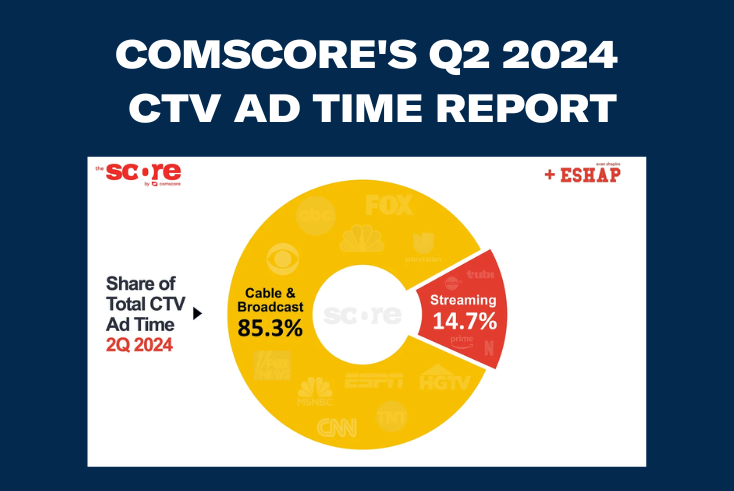Netflix and the upfront story: A new character that leaves the audience wanting more

Analysis
Netflix has closed its upfront advertising deal-making for the 2024/25 TV season at a “150%-plus increase” versus last year’s ad revenue commitments, according to Amy Reinhard, its president of advertising, in a company press release.
The upfronts are a big US deal-making period in which TV networks try to sell the bulk of their commercial inventory for their next cycle of programming.
But this year has been a challenge. The nation’s big media companies are facing significant headwinds in the current “upfront” market. Advertisers are pulling back on the amount of money they wish to commit to TV and media buyers have, according to reports, pressed the networks for significant “rollbacks” on rates. This is because, just at a time when streaming platforms like Netflix, Disney and Amazon are bulking up their content archives to sell ads against, audiences for linear broadcast TV are not growing.
Brand sponsorships
Now Netflix, which launched its cheaper ad-supported subscription nearly two years ago, finds itself playing this game alongside Disney, NBC, CBS and Fox.
It was interesting to see the company highlighting certain programmes for their brand tie-ups, rather than particular ad formats or placements. Netflix made its first branded content splash with Stranger Things and appears to adhering to a product placement-centred playbook.
Series three of Bridgerton, for example, landed multiple international sponsors, including L’Oréal, Pure Leaf and Amazon’s Audible. Similarly, the return of Emily in Paris attracted luxury brands.
Reinhard said: “Our advertising clients remain excited about our highly engaged audience and the variety and quality of our programming.
“Just last week, we partnered with LVMH, Coty Gucci, Kaiku Caffé Latte, Aeroméxico, L’Oréal, Google and Rakuten for the highly anticipated return of Emily in Paris.”
On the measurement side, Netflix is partnering with Nielsen One, Kantar (it is now a member of Barb in the UK) and Edo to provide advertisers with “comprehensive campaign performance data” across all ad formats. It has also touted partnerships with Snowflake and InfoSum to establish secure “clean room” environments, allowing advertisers to analyse campaign effectiveness without compromising user privacy.
Netflix accelerates revenue growth as it begins Barb reporting in the UK
Opaque numbers
And yet there still many questions about how Netflix is developing as a TV ads seller.
For example, what the headline figure of 150% growth means. Netflix doesn’t give any specific numbers — something that is now fairly typical for upfront announcements.
Various estimates, such as from industry analyst Brian Wieser and eMarketer, put Netflix’s US sales at about $1bn in 2024 — this would be partly based on upfront commitments from agencies last year.
While we shouldn’t expect a 150% increase in ad revenue just because Netflix claims its upfront commitments are going up by that proportion, it does give you an indication of just how small the numbers are, relative to how big Netflix is as a business and its more established rivals.
Earlier this year, The Media Leader estimated that Netflix’s global ad business could be worth around $2bn, making the generous assumption that its US business is about half of it. Compare that with the kind of numbers that are normally reported for NBC ($6-7bn) or CBS ($2-3bn).
Netflix ‘years away’ from big ad platform as subscriber growth wows market
Safe bets
Then one has to consider what Netflix has spent this year in terms of live sports, which is one of the last safe bets to get people to watch live TV. That is quite a departure from the ad-free Netflix that many thought would never bid for expensive sports rights.
In January, the company agreed a 10-year, $5bn deal with WWE to become the exclusive global broadcaster of WWE Raw from 2025. The agreement is by far Netflix’s biggest investment in live sport — $500m a year that is already eating into half of the ad revenue Netflix would have made this year.
Netflix has also agreed to pay NFL to show two games on Christmas day this year. That will cost the company about $75m per game, Bloomberg reported earlier this year. That’s another $150m.
So the costs are high and the ad revenue is not much higher. Compare this with Netflix’s market capitalisation — currently around $300bn. The reason why we don’t know how much ad revenue Netflix makes is because it’s too small to be a material concern in its quarterly earnings reports.
At least Netflix had a press release to issue this year. There was an “exclusive” in August 2023 from Adweek that didn’t seem to give any numbers; just that Netflix did deals with all the major holding groups and got “top of market” pricing.
Speaking of timing: Peter Naylor, the company’s head of advertising, left the business a matter of weeks ago — a year after his predecessor Jeremi Gorman departed. Naylor would surely have been an important figure in brokering these upfront deals, but where is he when those deals are just about to close?
Get with the programmatic
The online advertising offer has also changed markedly from what was originally mooted in 2022. Netflix had entered into an exclusive deal with Microsoft that, according to The Wall Street Journal, broke down over a minimum revenue threshold not being reached.
In this week’s upfront announcement, Netflix is promoting one-to-one private marketplace deals that media buyers can purchase directly with The Trade Desk, Google Display & Video 360 or Xandr.
Xandr, Netflix neglected to mention, is the advertising and analytics subsidiary of Microsoft.
All the while Netflix said: “We’re looking forward to the launch of our in-house adtech platform, which will be tested in Canada in November and launched globally in 2025.”
So there are still more questions than answers at this stage. That’s just as well for Netflix — arguably the greatest entertainment success story of the last decade.
What do the best entertainers do? Leave the audience wanting more.

À lire plus tard
Vous devez être inscrit pour ajouter cet article à votre liste de lecture
S'inscrire Déjà inscrit ? Connectez-vous









